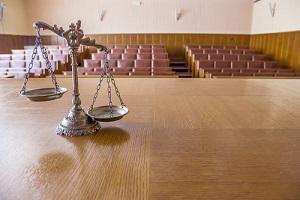Connecticut Supreme Court Redefines Courtroom Identification Procedures
 Even if you have never been inside a courtroom for a criminal trial, you have probably seen dramatized versions in movies and on television. As such, you are likely familiar with the concept of a courtroom identification. While a witness—often the alleged victim or an eyewitness to the crime—is being questioned, he or she is asked by the district attorney a question along the lines of “Is the person who committed this offense present in the courtroom today?” If the response is affirmative, the witness is then asked to point out that individual for the record.
Even if you have never been inside a courtroom for a criminal trial, you have probably seen dramatized versions in movies and on television. As such, you are likely familiar with the concept of a courtroom identification. While a witness—often the alleged victim or an eyewitness to the crime—is being questioned, he or she is asked by the district attorney a question along the lines of “Is the person who committed this offense present in the courtroom today?” If the response is affirmative, the witness is then asked to point out that individual for the record.
New Guidelines
Last week, the Connecticut Supreme Court handed down a ruling that places a limit on such in-court identifications. Going forward, the state must notify the court that a witness will be identifying a suspect in court for the first time, without having identified the suspect via a photo-lineup or other, non-suggestive manner prior to trial. The presiding judge is only permitted to allow a first-time identification in court if “there is no factual dispute as to the identity of the perpetrator, or the ability of the particular eyewitness to identify the defendant is not at issue.”
Eliminating Suggestive Identification
Connecticut Chief Justice Chase Rogers wrote the majority opinion for the court citing the importance of due process for a criminal defendant. He explained that identification evidence obtained through “unnecessarily suggestive” means must be excluded to preserve the principles of due process. He went to say, “We are hard pressed to imagine how there could be a more suggestive identification procedure than placing a witness on the stand in open court, confronting the witness with the person who the state has accused of committing the crime, and then asking the witness if he can identify the person who committed the crime.” Chief Justice Rogers concluded, “If this procedure is not suggestive, then no procedure is suggestive.”
Likely Impact
As state officials reacted to the court’s ruling, they realize that it will probably have a significant effect on the way many cases are handled. Greater emphasis must not be placed on pre-trial identification procedures, including police lineups and photo arrays, each with their own rules for preventing suggestive identification. First-time identification in court may still be permitted in certain situations, but only when the identity of the defendant is not in question. For example, if a defendant admitted to being present at a certain location but denies that his actions constituted a criminal offense, a witness would likely be allowed to identify the suspect as a person present at the scene. In such a case, the perpetrator’s identity would not be in question, only the nature of his or her actions.
The Supreme Court recognized that the decision may also impact a number of cases currently on appeal regarding in-court identification. The justices indicated that each case must be reviewed on its own merits and will send the case back to the trial court if the admission of such identification is found to be harmful to the defendant. In fact, the high court refused to remand the case that brought up the issue, even while establishing new guidelines. The court found that case against the defendant in Connecticut v. Dickson was proven beyond a reasonable doubt, even without the in-court identification.
Protecting Your Rights
When you have been accused of a crime, it is crucial that law enforcement and prosecutors follow appropriate rules and guidelines at all times. If you believe that your rights to due process are in jeopardy of being compromised, contact an experienced Hartford criminal defense attorney right away. Call 860-290-8690 to schedule a confidential consultation with the Woolf & Ross Law Firm, LLC, today.
Sources:
http://www.courant.com/news/connecticut/hc-supreme-court-suspect-identification-20160803-story.html
http://www.ctlawtribune.com/id=1202764406996/Split-Conn-Supreme-Court-Rules-Some-InCourt-Defendant-ID-Procedures-Unfair
https://www.jud.ct.gov/external/supapp/Cases/AROcr/CR322/322CR79.pdf






